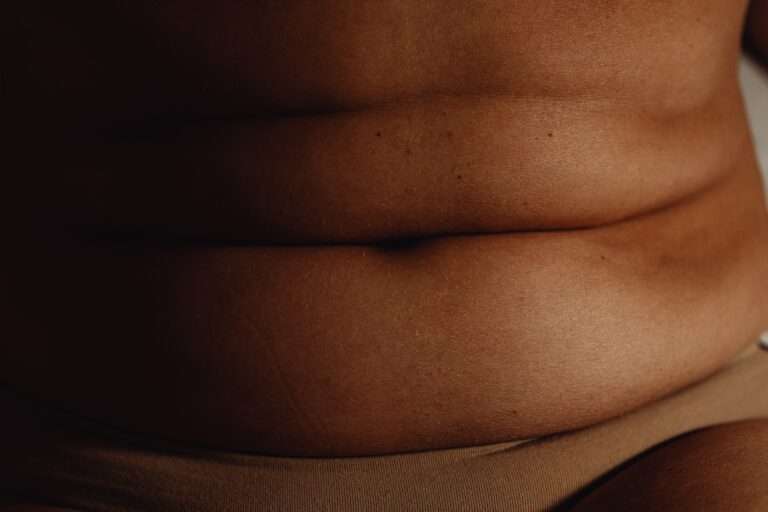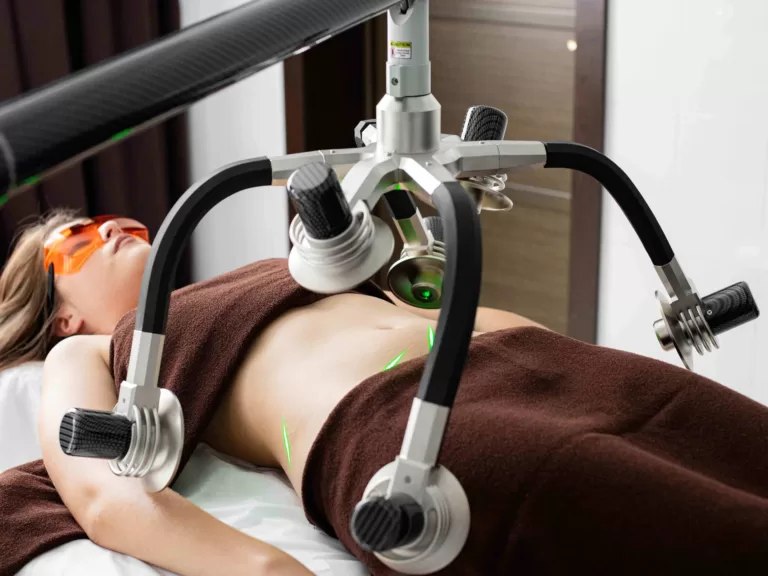Diastasis Recti Surgery Without Tummy Tuck
Diastasis recti is a condition that affects many individuals, especially women post-pregnancy. It occurs when the abdominal muscles separate due to pregnancy or significant weight fluctuations, resulting in a protruding belly and weakened core. While some cases of diastasis recti can be managed through exercise and physical therapy, severe cases often require surgical intervention. In the past, tummy tuck surgery was commonly recommended for diastasis recti repair. However, advancements in medical techniques have led to the development of diastasis recti surgery without a tummy tuck, providing a viable alternative for those who want to avoid the extensive procedures associated with a traditional tummy tuck.
In this comprehensive blog post, we will delve into the details of this surgery, exploring the procedure, its benefits, and the recovery process. We will also address common concerns and misconceptions regarding this surgery. By the end of this article, you will have a clear understanding of this alternative surgical option, empowering you to make informed decisions about your diastasis recti treatment.
What is Diastasis Recti?
Diastasis recti, also known as abdominal muscle separation, is a condition characterized by the widening and weakening of the connective tissue between the rectus abdominis muscles, commonly referred to as the “six-pack” muscles. This condition often occurs during pregnancy as the growing uterus puts significant pressure on the abdominal wall. Additionally, factors such as multiple pregnancies, genetics, and excessive weight gain can contribute to the development of diastasis recti.
The separation of the abdominal muscles can lead to a noticeable bulge or protrusion in the midsection, which may persist even after weight loss. In addition to aesthetic concerns, diastasis recti can cause functional issues, including poor core stability, lower back pain, and urinary incontinence. It can also impact one’s posture and overall body alignment.
Recognizing the symptoms of diastasis recti is crucial for seeking appropriate treatment. Common signs include a visible gap or indentation in the midline of the abdomen, especially when engaging the core muscles or performing certain movements. Some individuals may also experience lower back pain, digestive issues, and a weakened pelvic floor.
Diastasis Recti Surgery: Traditional Approach vs No Tummy Tuck
Traditionally, tummy tuck surgery, technically known as abdominoplasty, has been the go-to procedure for treating diastasis recti. A tummy tuck involves the removal of excess skin and fat from the abdominal region, along with the tightening of the underlying muscles. While tummy tucks can provide excellent results, they are more invasive and require a longer recovery period.
However, advancements in surgical techniques have led to the development of diastasis recti surgery without tummy tuck, which offers a less extensive alternative. This procedure focuses solely on repairing the separated abdominal muscles without the need for excess skin and fat removal. The main goal is to restore core strength and functionality while preserving a natural body contour.
One of the primary drawbacks of tummy tuck surgery is the extended recovery time. It typically takes several weeks or even months for patients to fully heal and regain their normal activities. The extensive incisions and tissue removal involved in a tummy tuck can lead to more discomfort, a higher risk of complications, and longer hospital stays.
On the other hand, diastasis recti surgery without tummy tuck involves smaller incisions and less tissue manipulation, resulting in reduced trauma to the body. This minimally invasive approach allows for a quicker recovery, shorter hospital stays, and decreased post-operative pain. Patients can expect to return to their daily activities sooner, making it a preferable option for individuals with busy lifestyles or those seeking a faster recovery.
Diastasis Recti Surgery Without Tummy Tuck: How Does it Work?
Before undergoing this procedure, a comprehensive evaluation and diagnosis are essential. During your initial consultation, your surgeon will assess the severity of your condition, evaluate your overall health, and discuss your treatment goals. This thorough assessment will help determine if you are a suitable candidate for this surgical approach.
The surgical techniques used in diastasis recti surgery without tummy tuck may vary depending on the individual case and the surgeon’s expertise. However, there are generally two main approaches: endoscopic repair and suturing techniques.
Endoscopic Repair
Endoscopic repair involves the use of a thin tube-like instrument with a camera (endoscope) and specialized surgical tools. The surgeon makes small incisions near the belly button and inserts the endoscope to visualize the underlying abdominal muscles. With the help of small instruments, the surgeon brings the separated muscles back together, reinforcing them with sutures or mesh. This technique allows for precise muscle alignment and minimal scarring.
Suturing Technique
Another common technique is the use of sutures to repair the diastasis recti. The surgeon makes small incisions in the abdominal area and carefully sutures the weakened muscles together, tightening the connective tissue. This method provides stability and support to the abdominal wall, restoring core strength and function.
Both endoscopic repair and suturing techniques offer similar outcomes in terms of muscle repair and improved core strength. Your surgeon will determine the most suitable technique based on your specific case and individual needs.
The Benefits of Diastasis Recti Surgery without Tummy Tuck
There are numerous advantages of diastasis recti surgery without a tummy tuck. In the following section, we will discuss the benefits of this surgical approach in detail.
- Improved Core Strength and Functionality: Diastasis recti surgery without tummy tuck focuses on repairing the separated abdominal muscles, leading to a stronger core. By restoring the integrity of the abdominal wall, this surgery improves core stability, posture, and overall functional ability. Patients often experience reduced back pain and better control of their core muscles, enabling them to engage in physical activities with greater ease.
- Enhanced Body Contour and Aesthetics: While diastasis recti surgery without tummy tuck does not involve removing excess skin and fat, it can still contribute to an improved body contour. By tightening the abdominal muscles, the surgery helps flatten the midsection, reducing the appearance of the bulge caused by muscle separation. This can lead to a more toned and sculpted abdominal area, enhancing one’s overall body shape.
- Minimal Scarring and Quicker Recovery: Compared to a traditional tummy tuck, diastasis recti surgery without a tummy tuck involves smaller incisions, resulting in less noticeable scars. The smaller incisions also contribute to a faster recovery process. Patients typically experience less post-operative pain, have shorter hospital stays, and can return to their regular activities sooner. The reduced downtime and quicker recovery make this surgical approach more appealing to those with busy lifestyles or limited time for extended healing periods.
The Recovery Process: What to Expect
The recovery process following diastasis recti surgery without a tummy tuck is generally shorter and less demanding compared to a traditional tummy tuck. However, it’s important to follow your surgeon’s post-operative instructions carefully to ensure optimal healing. Here are some key aspects of the recovery process:
- Post-Surgery Care and Instructions: Your surgeon will provide detailed guidelines for wound care, dressing changes, and maintaining proper hygiene. It’s crucial to keep the incision sites clean and dry to prevent infections.
- Managing Pain and Discomfort: While diastasis recti surgery without tummy tuck involves smaller incisions and less tissue manipulation, some discomfort is still expected during the initial recovery period. Your surgeon may prescribe pain medication or recommend over-the-counter pain relievers to manage any post-operative pain.
- Rehabilitation and Physical Therapy: Engaging in physical therapy or rehabilitation exercises plays a vital role in the recovery process. Your surgeon or a specialized physical therapist will guide you through exercises that focus on strengthening the abdominal muscles and promoting proper healing. Gradually increasing your activity level under professional supervision will help restore core strength and function.
During the recovery period, it’s essential to listen to your body and avoid activities that strain the abdominal muscles. Follow-up appointments with your surgeon will allow them to monitor your progress and address any concerns or questions you may have.
Common Concerns and Misconceptions
As with any surgical procedure, there may be concerns or misconceptions surrounding diastasis recti surgery without a tummy tuck. Let’s address some of the common concerns and misconceptions:
- Is Diastasis Recti Surgery without Tummy Tuck Effective? Yes, diastasis recti surgery without tummy tuck can be highly effective in repairing the separated abdominal muscles. Numerous studies have shown positive outcomes in terms of improved core strength, reduced symptoms, and enhanced body contour. However, it’s important to have realistic expectations and understand that individual results may vary.
- Can It Be Combined with Other Procedures? Yes, it can be combined with other procedures, depending on the individual’s needs and goals. For example, if there is excess skin and fat in the abdominal area, a surgeon may recommend a complementary procedure such as liposuction to achieve optimal results. It’s crucial to discuss your specific concerns and desires with your surgeon during the consultation process.
- Who Is an Ideal Candidate for this Surgery? Ideal candidates for diastasis recti surgery without tummy tuck are individuals who have a significant separation of the abdominal muscles without excessive skin laxity or excess fat. They should be in good overall health, non-smokers, and have realistic expectations regarding the outcomes of the procedure. A thorough evaluation and consultation with a qualified surgeon will help determine if this surgery is suitable for you.
Conclusion
Diastasis recti surgery without tummy tuck offers a viable alternative for individuals seeking treatment for abdominal muscle separation. This less invasive procedure focuses on repairing the separated muscles, improving core strength, and enhancing body contour without the need for excess skin and fat removal.
The benefits of diastasis recti surgery without a tummy tuck include improved core functionality, enhanced aesthetics, minimal scarring, and a faster recovery compared to a traditional tummy tuck. However, it is important to consult with a qualified surgeon to determine if this procedure is suitable for your specific case.
By understanding the details, its benefits, and the recovery process, you are empowered to make informed decisions about your diastasis recti treatment. Remember to follow your surgeon’s instructions and engage in appropriate rehabilitation exercises to optimize your results and regain a strong and functional core.







